Gilt Edge History
Gold was discovered by W. E. (Limerock) Wilson on the east slopes of the Judith Mountains in 1883 and the prospect was named “Gilt Edge.” The ore could not be successfully treated by methods available at the time. However, in 1892 the new cyanide process was introduced at Gilt Edge and over time proved quite successful. This cyanide gold mill, the first or second in the U. S., was located adjacent to what would become the town of Gilt Edge.
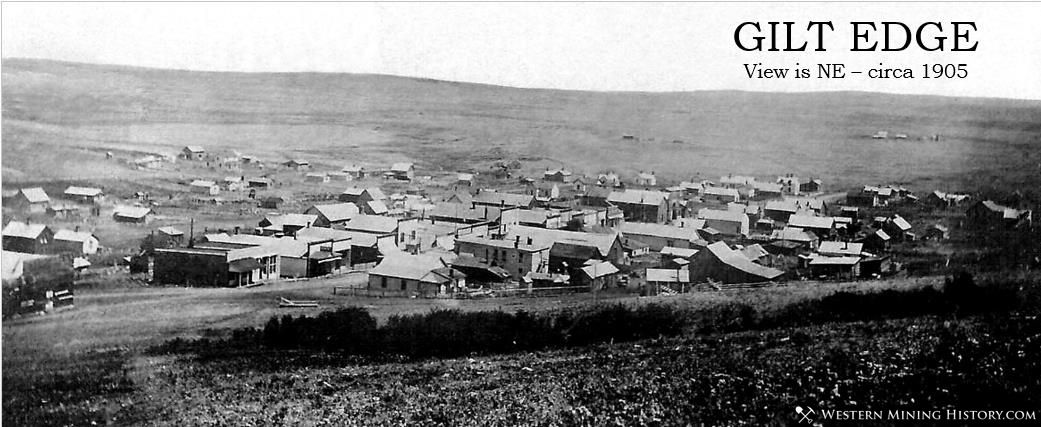
The mine itself was nearly two miles from the mill. While the cyanide process worked well other problems plagued early operations. In 1897, under new ownership, a large mill was built right at the mine. This operated successfully until 1912. The Whiskey Gulch and Mammoth mines were also developed within a few miles of Gilt Edge. In 1917 a cyanide plant was built at the original 1892 mill site to reprocess old mill tailings but was short lived.
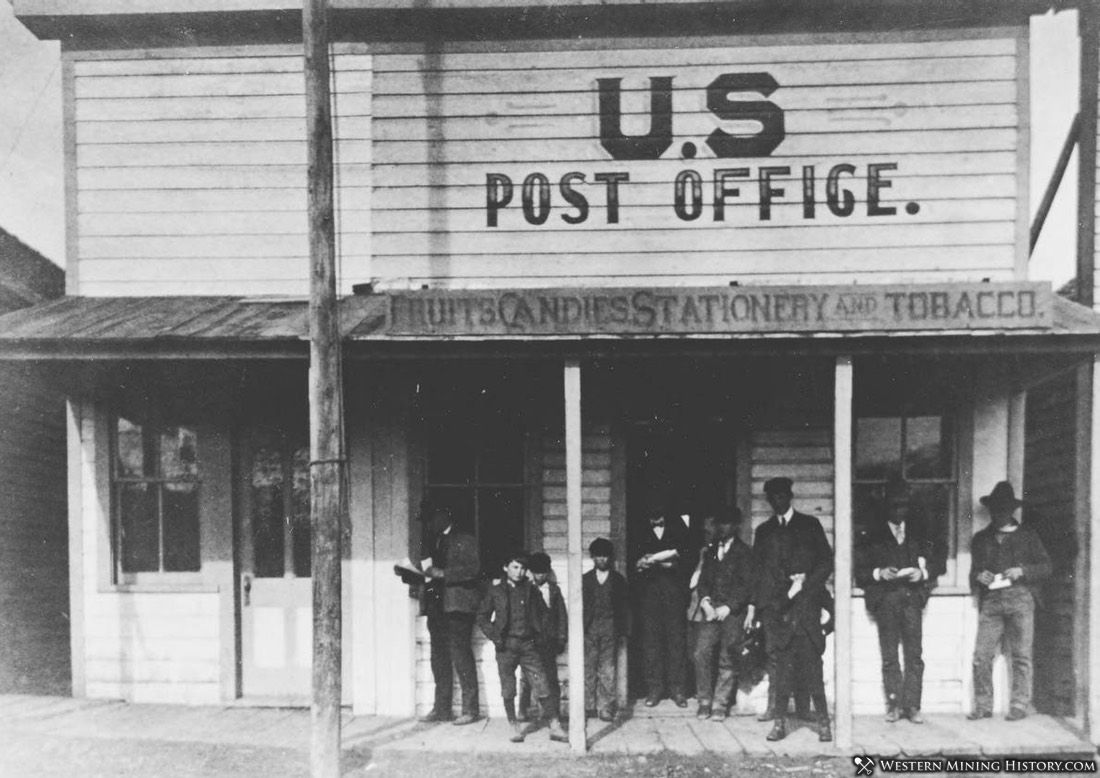
With the new cyanide operation attracting so much attention, the town of Gilt Edge was born in 1893 and grew quickly. A formal townsite was laid-out and many of the abandoned buildings from Fort Maginnis (1880-1890) were used to build Gilt Edge. Problems with the mine led to lulls in growth, even a decline in the mid-1890s.
A new mine ownership turned things around and by the late 1890s through about 1912 the mines and town prospered. The town also attracted business from nearby ranches and declining Maiden.
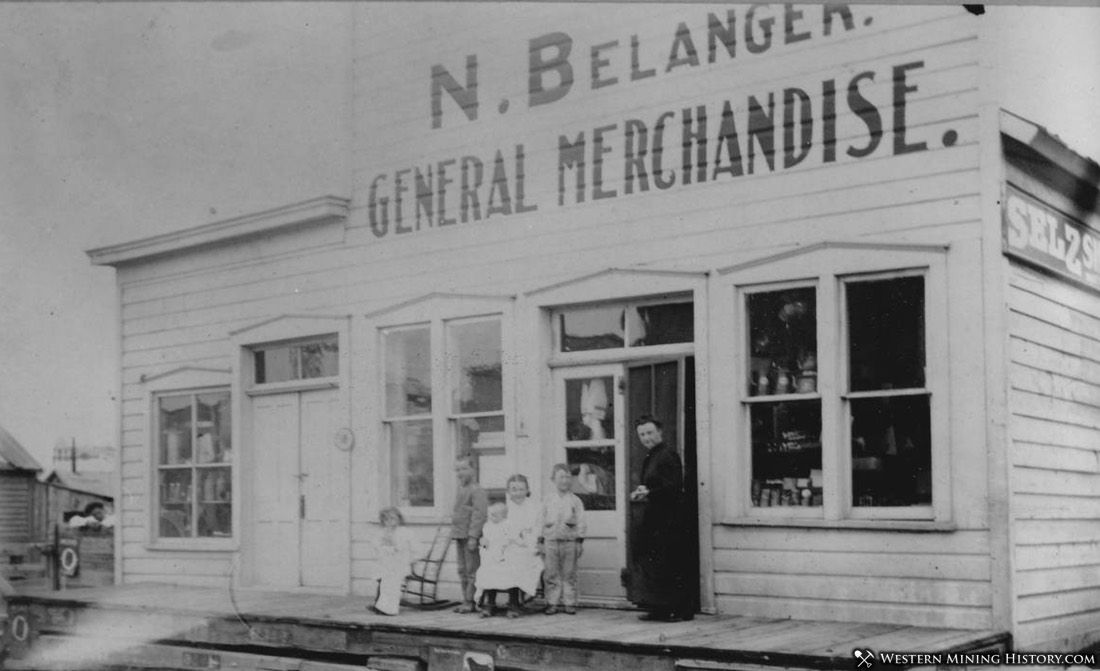
Gilt Edge boasted a number of fine businesses, a school, a hospital, and many dwellings surrounding the business district. The population peaked around 1908 at 1,500. Legendary Calamity Jane frequented Gilt Edge. The last mining at Gilt Edge occurred in the 1980s and ended in 1991.
Open cuts and dumps from the mining can be seen on the mountain slopes one and one-half miles to the northwest of the old townsite. Total production of the Gilt Edge area mines is about 100,000 ounces of gold.
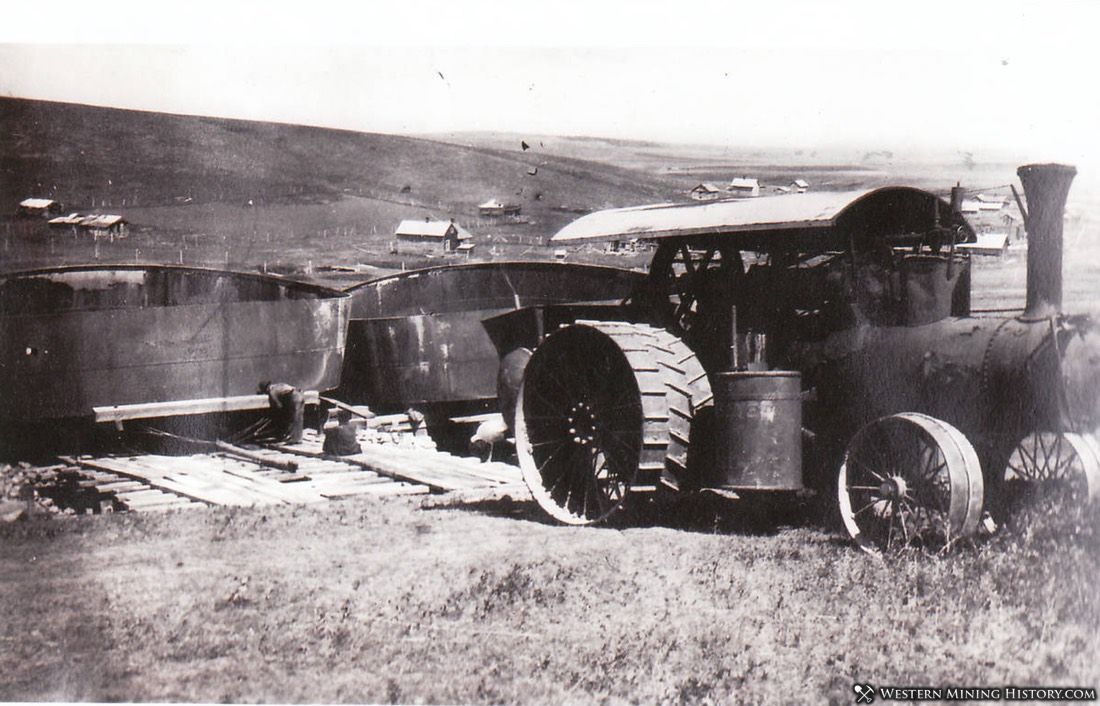
Today, Gilt Edge is dotted with a few ruins and newer residences and out-buildings. Included are remains of a stone store front, wooden jail, former house of prostitution, a brick building, and other ruins. Maiden Road and Gilt Edge Road meet as they pass through town on what was Chickadee Avenue. A few of the old streets can also be traveled.
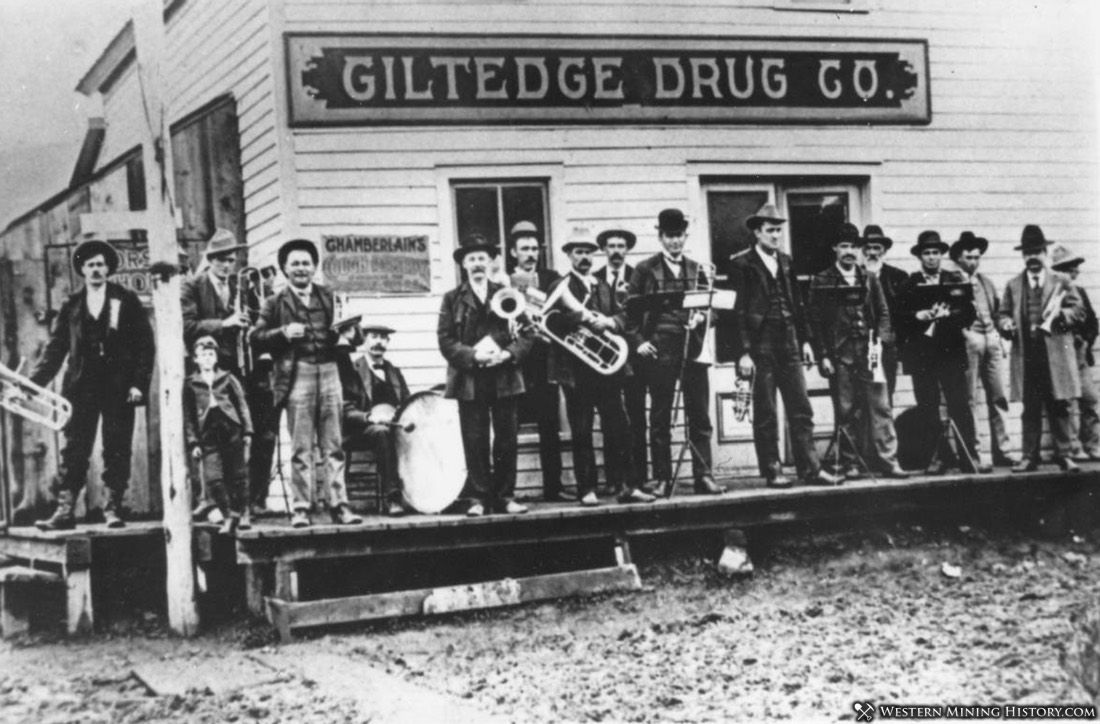
Other than the streets, all of Gilt Edge including other travel ways are private property.
Text provided by Jerry Hanley
Principal Gold Districts of Montana
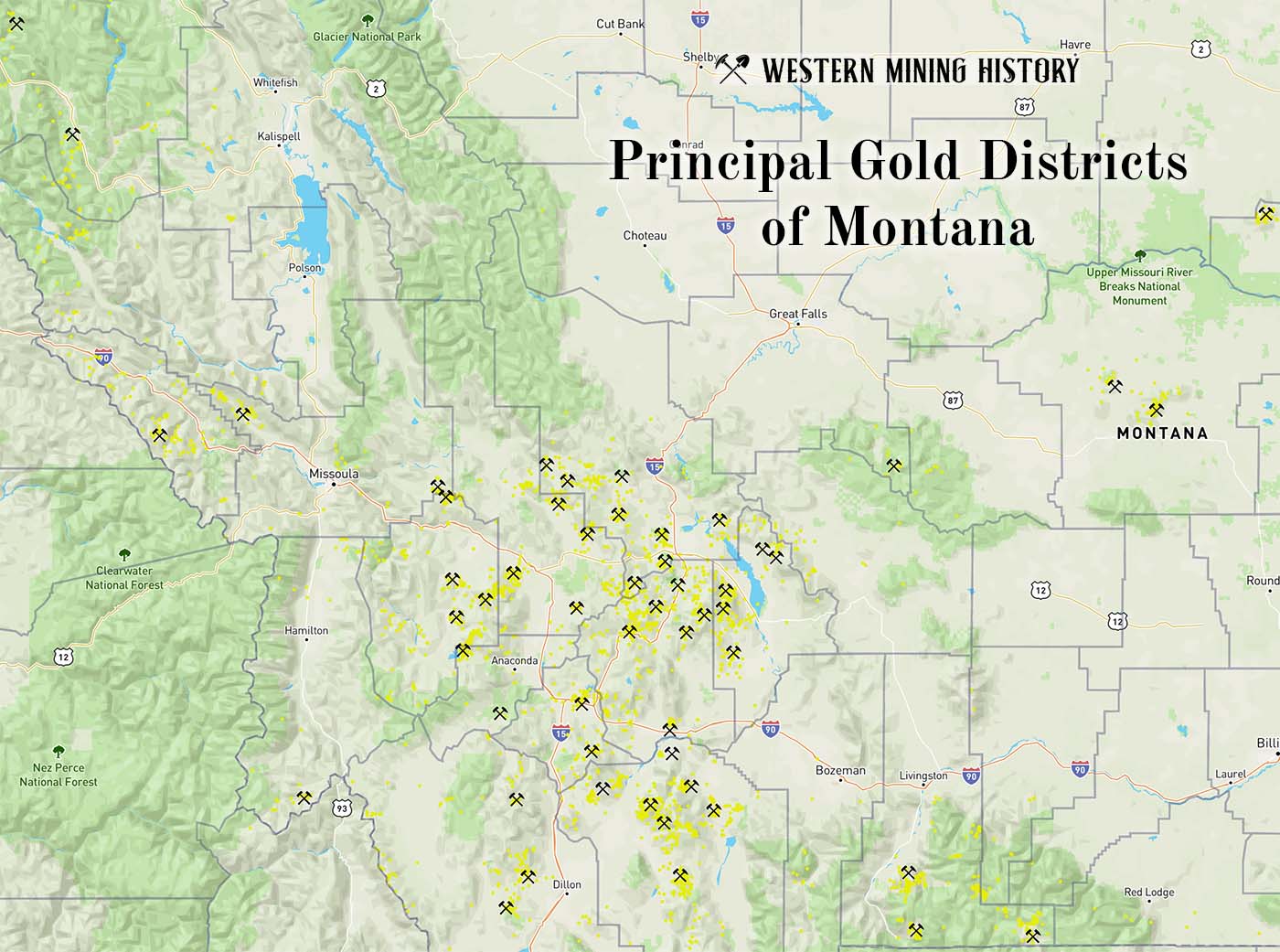
In Montana, 54 mining districts have each have produced more than 10,000 ounces of gold. The largest producers are Butte, Helena, Marysville, and Virginia City, each having produced more than one million ounces. Twenty seven other districts are each credited with between 100,000 and one million ounces of gold production. Read more: Principal Gold Districts of Montana.